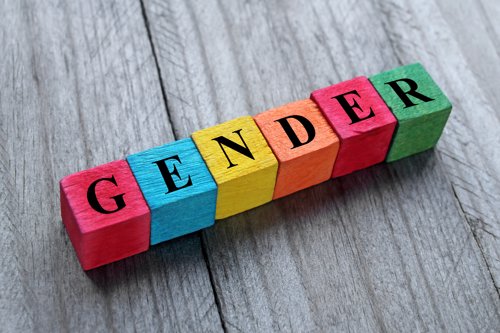
News
Does gender affect our gut microbiota?
It is already well known that the gut microbiota is part of our identity, which is unique to each of us and can be influenced by many factors such as medication and our age. Yet, is our microbiota also influenced by our gender? Here we share with you some interesting facts that are known so far.
Do women and men differ in their gut microbiota?
Animal and human studies indicate that there are gender specific differences in the gut microbiota, and the origin of such differences have been partly explained by hormonal sex levels.1,2,4 For example, some studies indicate that oestrogen, the main female sex hormone, can influence the composition of the microbiota and vice versa.5
In humans some similarity is seen in the microbial communities between girls and boys during infancy and childhood.1,4 Such similarity deviates once they reach puberty, suggesting an interaction between sex hormones and the gut microbiota. From this period onwards, significant increases in certain bacterial groups can be observed depending on the gender such as Bilophila in females or Veillonella and Methanobrevibacter in males.
During pregnancy a shift in the gut microbiota composition has been observed with a so-called “obese” phenotype (a particular microbial signature) flourishing during the third trimester. This shift has been seen to enhance the growth of the baby and stimulate breastmilk production.6
What impact do sex-dependant differences in the gut microbiota have on health?
A novel study looking into the gender differences in the gut microbiota of those with metabolic syndrome found higher levels of Collinsella, Alistipes, Anaerotruncus and Phascolarctobacterium genera in females compared to males, who had a higher abundance of Faecalibacterium and Prevotella genera. Further sex-dependant changes in the gut microbiota were observed in response to dietary changes. When participants followed a low-fat diet levels of Desulfovibrio, Roseburia and Holdemania genera increased, but only in male subjects.7
Other studies have identified an association between gut microbiota, gender and susceptibility to inflammatory and auto-immune diseases.1,2,8 The gut barrier, autoimmune disease pathology and function of the immune system can be regulated by the gut microbiota9,10. Female mice may be more susceptible to type 1 diabetes (T1DM) than male mice, due to the sex-specific hormones impacting the gut microbiota composition, as previously mentioned. Increased serum testosterone in male mice appears to be protective of T1DM by inhibiting the development of B and T cells linked to autoimmune disease. However, this protection was lost in germ-free male mice2,3 suggesting a role from the gut microbiota.
Transferring the microbiota from male adult mice to female pubertal mice produced what researchers called the “masculinisation” of the female mice. Not only did the gut microbial communities change in the females, but their testosterone, the main male sex hormone, also increased.11 Furthermore, although not studied yet in humans, some experiments in mice demonstrated that low doses of antibiotics at an early age lead to the feminisation of male mice in adulthood.12 Studies also indicate that mice grown without a gut microbiota suffered an altered sexual maturation and metabolism.13
The gut microbiota differs between males and females, particularly after puberty, as supported by both animal and human studies, which is likely attributed to differences in sex hormones. This may lead to differences in disease susceptibility between males and females, specifically autoimmune and metabolic diseases, supporting the rationale for more studies to look into personalised nutrition and medication.
However, that said, researchers suggest that other factors including diet and genetics play a larger role in shaping our microbial community, at least in the gut.
References
1. Yurkovetskiy et al. (2013) Immunity 39(2): 400-412.
2. Markle et al. (2013) Science 339(6123): 1084-1088.
3. Magdalena et al. (2014) Science 339(6123): 1044-1045.
4. Jasarevic et al. (2016) Philos Trans R Soc Lond B Biol Sci 371(1688): 20150122.
5. Baker et al. (2017) Maturitas 103: 45-53.
6. Koren et al. (2012) Cell 150(3): 470-480.
7. Santos-Marcos et al. (2019) Molecular Nutrition and Food Research 63(7): e1800870.
8. Gomez et al. (2016) Clinical Immunology 159(2): 154-162.
9. Risetto et al. (2018) Journal of Autoimmunity 92: 12-34.
10. Hiippala et al. (2018) Nutrients 10(8): 988.
11. Rosenberg and Zilber-Rosenberg.(2020) BJOG: An International Journal of Obstetrics & Gynaecology 127(2): 129-137.
12. Morris. (2019) Nature Reviews Endocrinology 15(1): 4.
13. Weger et al. (2019) Cell Metab 29(2) 362-382.
20/04/2020
